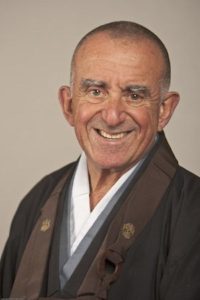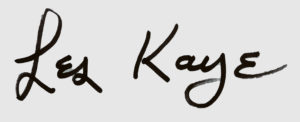Kuei Shan's Dream

The Abbot’s Letter
November 2020
“Kuei Shan’s Dream”
Kuei Shan is a major figure in the history of Zen. He lived and taught in the late eighth and early ninth century and was the first to found a house of his own. While he was napping on a hot summer day following work, a monk entered his room. Kuei Shan awoke and said to the monk: “I had a very interesting dream. Can you tell me about my dream?” The monk quietly went to the kitchen and brought back a cup of tea for his teacher. When another monk came into the room, Kuei Shan said: : “I had a profound dream. Can you tell me about it?” Without a word, the second monk went to the kitchen for a wet cloth for Kuei Shan to cool himself. Kuei Shan exclaimed: “I have very good students.”
As in so many similar stories in the Zen tradition, the monks did not try to interpret Kuei Shan’s dream by seeking information. They did not ask, “Was it night or day?,” “Was anybody else in your dream?” “What did you see?,” or a similar question that might give them a clue. Rather than turn to the intellect to pursue the meaning of the dream, they responded to the moment, to what was needed, to how they could care for their teacher. With an aware mind ready to take in the immediate present, neither monk reacted to the “problem” of interpreting the dream.
A more recent example of the wisdom of responding creatively – rather than reactively – was described by the Reverend Paul Bains, pastor of Saint Samuels church in East Palo Alto. Rev. Bains was Kannon Do’s guest speaker in our “Buddhism in Society” program in late September. He spoke about the WeHOPE program and shared with us his experiences – and those of his family and friends – of what it is like to be African-American in today’s world.
He told a story of his father who arrived in San Francisco with very little resources. He worked two jobs, one as a hotel doorman. One day, a white man came to the hotel and without explanation, hit his father in face, knocking him down. His father did not react verbally or physically, even though he had been a prize-fighter in the army. He only said, “Why did you do that?” The man replied, “Shut up, you stupid (N-word)!”
Three days later, the man returned to the hotel and apologized. He invited Reverand Bains’ father to hit him. But his father said “no.” He later explained to his son that he always tried to allow his faith to help him help deal with racist and prejudicial actions of others.
Reverend Bains’ father had learned the hard way to respond to aggression with equanimity, that it was the best way to allow for creative possibilities, and a chance for relationships to heal. He also learned that reacting with anger, being ready to fight, only makes a bad situation worse, escalating a conflict. The wisdom of choosing a creative response in place of an automatic, conditioned reaction is universal, beyond any particular spiritual practice or belief system. That wisdom is available to everyone.
Exploring the history of civilization and the behaviors of ancient people, we would conclude that reactivity is part of our DNA. It probably is, but it is not the only part and does not fully define us. Certainly our early ancestors learned to be defensive and aggressive in order to survive a harsh environment. And in today’s world we often express those tendencies when we feel unsafe. But a hard mind is not the complete picture of who we are.
Early people lived in small communities and tribes. Food and shelter were scarce, with danger all around. Disharmony was a grave threat; survival required that they be responsive and supportive of each other. Long ago, we acquired that understanding; it is part of who we are.
As John Steinbeck observed in “East of Eden,”
Virtue and vice were warp and woof of our first consciousness, and they will be the fabric of our last.
Kuei Shan’s monks did not pursue the dream. They did not react out of habit, trying to problem-solve in the expected manner. They responded instead with an understanding that was immediate and caring. .
After meeting with his students, Kuei Shan composed the following poem:
Waking from a crazy dream,
a dream that feels rich with meaning,
one might be inclined to analyze.
Thus books are sold,
experts paid.
Years later, the old dream returns,
but now, penniless, one just
washes his face,
sips her tea,
stretches
and gets on with the day.
When we first encounter Buddhism, we learn that “Buddha” means “one who is awake,” who is free from the fog of illusions. So Kuei Shan’s poem encompasses the entire teaching in just a few lines. Through our practice together, we can discover the enlightened and responsive mind that is continually present.
Les Kaye
Abbot of Kannon Do


